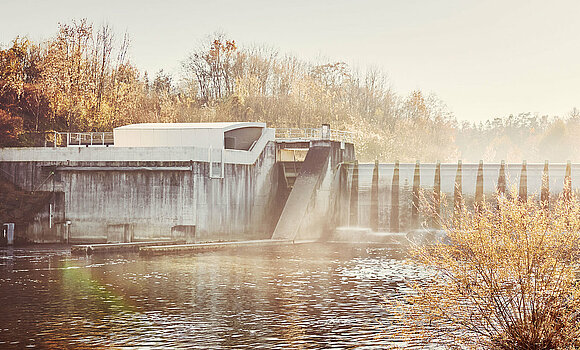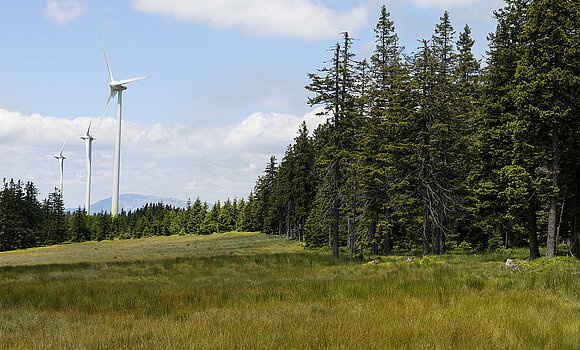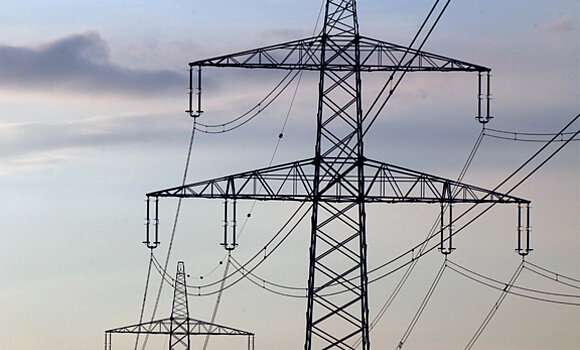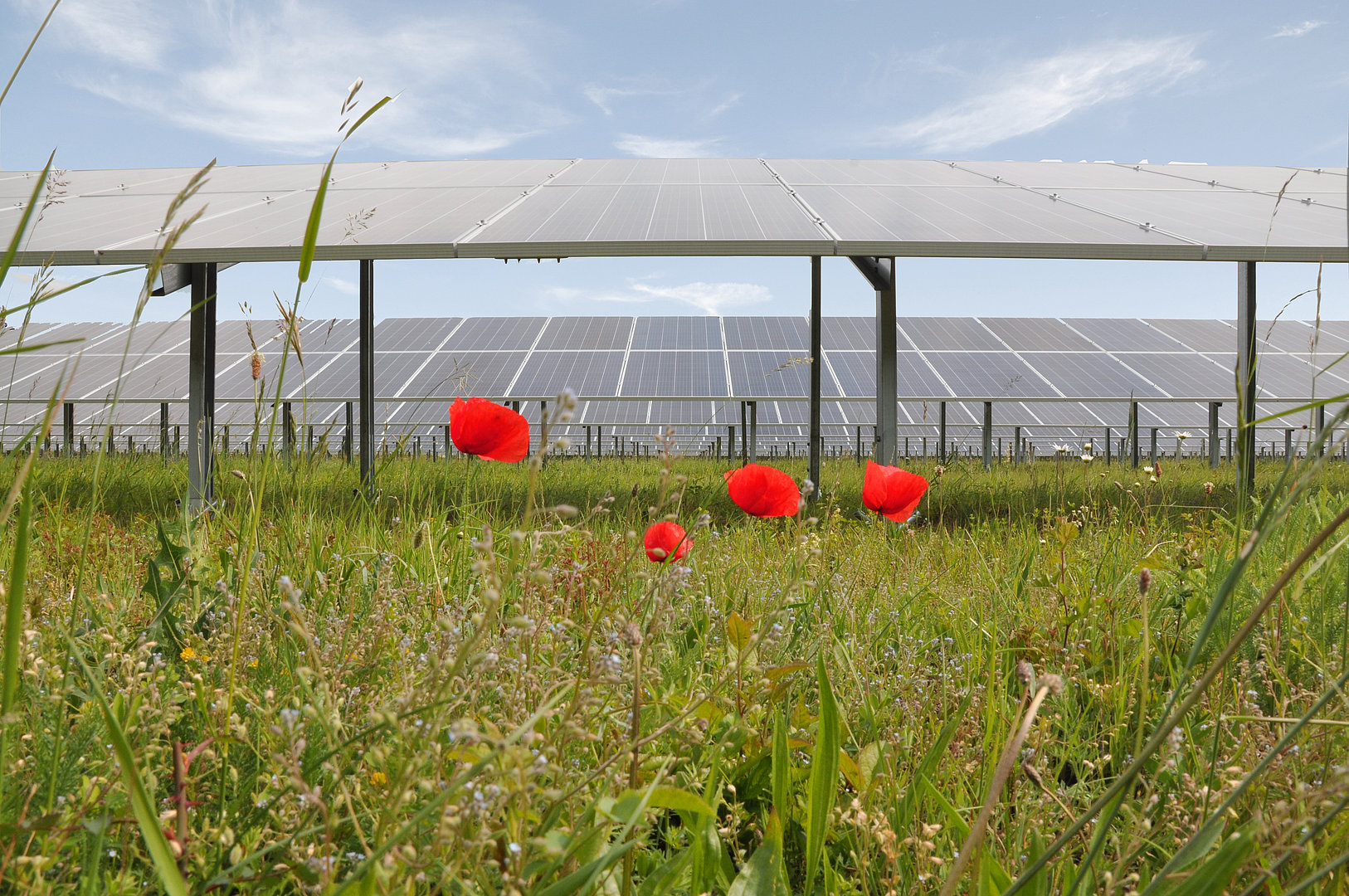The power of renewables: how our electricity system works
“Land of mountains, land by the river” as the Austrian national anthem goes. And the country’s rivers play a central role in the electricity system – hydropower plants produce more than 60% of Austria’s power. Around 100 large hydropower stations and thousands of small hydro plants ensure stable basic supplies. Hydro is the least volatile of all renewable energy sources, because it operates largely independently of weather conditions and the time of year. Taking wind, biomass and solar into account, renewable power generation rises to more than three-quarters of the country’s total electricity production. Austria’s last coal-fired power plant closed back in 2020.
Renewables make for flexible generation mix
Austria has a highly reliable electricity supply network – thanks mainly to a diversified mix of energy sources which ensures that generating capacity can be put to optimum use at any time.
In Austria, hydropower is one of the most widely used means of generating electricity. Run-of-river power stations produce power around the clock, while pumped storage power stations store the energy and supply electricity to consumers as required. When the wind dies down and less wind power is produced, energy held in storage can quickly be transformed into electricity to make up the shortfall. If there is an oversupply of electricity, excess energy can be used to refill reservoirs. This makes pumped storage power stations ideal partners for wind farms.


At the moment, wind power accounts for about 11% of Austria’s total electricity output. The share of photovoltaics in Austria is growing rapidly and already accounts for 7 percent of total electricity generation.
Stable grid thanks to thermal and pumped storage power stations
Austria’s flexible, high-efficiency thermal power stations help to maintain a reliable, balanced electricity network, even in the face of lengthier fluctuations in generation and unfavourable weather conditions. These facilities are now too expensive to operate permanently, but since they can be quickly fired up when required, they are central to ensuring secure electricity supplies, working in tandem with highly flexible pumped storage power stations.
Thermal energy is put to particularly efficient use at combined heat and power (CHP) facilities – besides electricity, they also generate heat which can be supplied to customers through district heating networks. Modern plants have an efficiency rating of close to 90%. And thanks to investment and state-of-the-art technology, CO2 emissions from CHP plants in Austria have been steadily reduced. Local generation at stations located close to consumers also helps to ensure security of supply, as well as supporting regional economic growth.
Austria is connected to neighbouring countries via the European electricity system. Depending on the current market situation, Austria either imports or exports electricity. On average, renewables account for 45.3% (as of 2023) in gross electricity consumption across the EU.
Targeting 100% renewable electricity
Austria has set itself the target of meeting 100% of its annual electricity needs from renewable energy sources by 2030. To achieve this, an additional 27 terawatt hours (TWh) of power will have to be generated from renewables. Solar and wind power will provide the lion’s share, with an extra 11 TWh and 10 TWh respectively, with another 5 TWh coming from hydropower and 1 TWh from biomass.
These restructuring moves will not only pose a challenge for electricity generators; they will also increase the pressure on power grids. Electricity cannot be easily stored in large quantities, so at any one time, exactly the same amount needs to be generated as is used by consumers. But due to the volatility of renewable generation, in future we will be faced more often with situations where far too little or too much electricity is produced. Network infrastructure can help to balance out these fluctuations by moving electricity to the places where it is needed or can be stored.
Delivering electricity to customers

Austria has more than 200,000km of overhead and underground power lines which help to ensure that electricity completes the journey from the power station to the consumer. The electricity grid in Austria is split into different levels. The greater the volume of electricity that needs to be transmitted over large distances, the higher the grid level it travels along. This means that large power plants inject electricity into the system at the top level. Then comes large-scale industry at the next level, followed by municipal generators and large consumers. Private households and small generating stations, like home photovoltaic systems, make up the bottom level.
For many years, people in Austria were supplied by local generating companies, and there was no such thing as a free choice of provider, which consumers now take for granted. All this changed from 1998 onwards, with the gradual liberalisation of the Austrian electricity market based on an EU directive. Electricity customers in Austria have been able to choose their electricity supplier freely since 2001. And the number of customers who switch supplier has been on the rise ever since. 42,639 households and companies made a switch in 2005, but by 2019 the figure had risen to 263,957.
Since liberalisation, the electricity price has comprised system charges – which are still regulated – for use of the grid, the energy prices determined by the market, as well as taxes and levies which are set by way of legislation. These three components make up around a third of the total price.
Precise guarantees of origin
To make sure that customers know exactly how the electricity they buy is generated, their supplier must provide a precise breakdown of the energy sources used. Under the labelling regulations, electricity of unknown origin has not been permitted since 2015. Not only was Austria a prime mover in terms of market liberalisation, its labelling system is also more advanced than that of most countries.
The huge expansion in renewable generation over the next few years will pose the next major challenge for Austria’s electricity sector – the system will become more decentralised, with numerous small generating facilities such as rooftop photovoltaic arrays connected to the grid. And as more and more generators are integrated into the system, it will become increasingly difficult to forecast the amount of power generated and keep it in line with consumption. This is why we are working to build the electricity network of the future: a smart grid. The idea is to link generators and consumers by means of IT devices, so that it is possible to respond to the prevailing network situation practically in real time.


